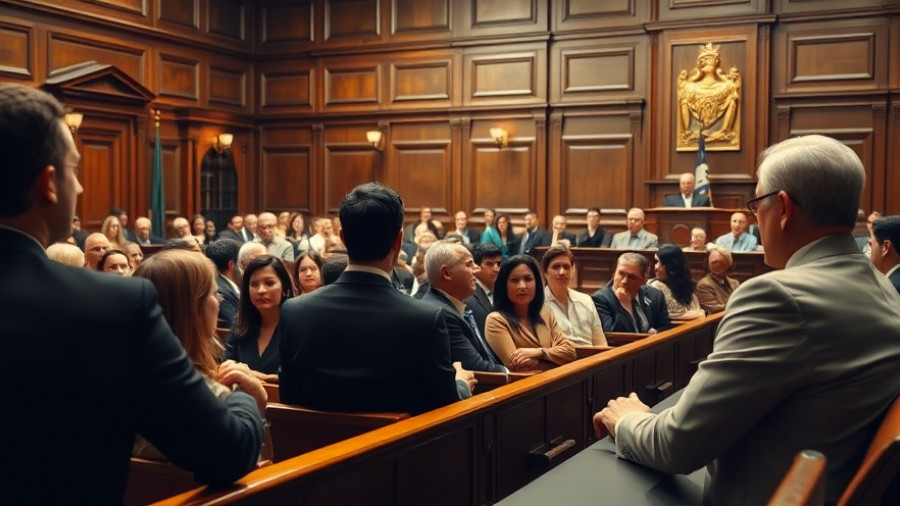
Deliberations Underway in the Sutherland Case
As the jury convenes to deliberate the fate of Roderick William Sutherland, the case highlights the complex layers surrounding the tragic death of Megan Michelle Gallagher. Sutherland, facing manslaughter, unlawful confinement, and charges related to human remains, stands as the last of several defendants connected to Gallagher's murder.
What Led to Gallagher's Death?
Megan Gallagher, 30, was last seen alive on September 19, 2020, and her remains were discovered nearly two years later near the South Saskatchewan River. The chilling details reveal a grim scenario in which Gallagher was reportedly confined, assaulted, and ultimately, lost her life in a garage on Weldon Avenue where Sutherland lived. The trial has brought forth various testimonies and pieces of evidence that paint a dismal picture of the circumstances surrounding her death.
The Jury's Role and Considerations
The jury's task is daunting: to sift through the evidence presented in court to determine whether Sutherland was complicit in Gallagher’s confinement and subsequent death. Closing arguments highlighted Sutherland's alleged involvement, with the prosecution asserting he played a central role in the events leading up to Gallagher's demise. Various testimonies, including that of Robert Thomas, a convicted felon tied to the case, have potentially significant implications on the jury’s verdict.
Legality of Manslaughter and Its Implications
This case embodies important legal principles regarding manslaughter and joint liability. Legal experts indicate that being an accessory or facilitator of a crime can still lead to severe consequences, and Sutherland’s charges reflect this legal reality. Understanding these implications can provide clarity on how justice is pursued in cases of collective criminal actions.
Looking Ahead: What’s Next for the Legal System?
The outcome of this trial could influence future cases and public perception surrounding crime and punishment in Saskatchewan. It serves as a grim reminder of the reality of violence in communities, especially against marginalized individuals. As the legal landscape evolves, the community must remain vigilant about improving safety standards and providing support to vulnerable populations.
Community Reactions and the Larger Picture
Such cases resonate deeply within communities, stirring cycles of grief and calls for action against violence. The justice system's handling of Gallagher's murder raises essential questions about accountability and the effectiveness of current law enforcement strategies. Community activism may emerge in response to this tragedy, advocating for measures aimed at preventing similar events in the future.
As the jury continues its deliberations, the implications of this trial will extend beyond the courtroom, reminding us of the societal obligations we share in seeking justice and promoting safety. Please stay informed as we follow this case closely for updates on its resolution and the changes it may prompt in our community.
 Add Row
Add Row  Add
Add 




Write A Comment